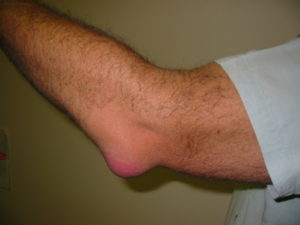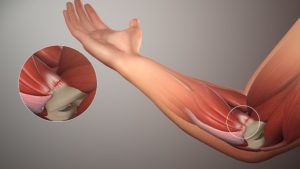
Ulnar Nerve Pain
Typical Symptoms
Injury to the ulnar nerve can cause pain, tingling, numbness and even weakness along the area it supplies. Typically when injury occurs at the elbow, the symptoms occur in the forearm along the pinky side and down to the hand.

What causes it?
Injury to the ulnar nerve can happen anywhere along its pathway in the arm but that around the elbow usually develops after prolonged compression/pressure on the nerve or from a direct trauma. This can lead to the nerve becoming irritated as it curves around the elbow and in some situations there can be thickening, excessive movement or even tearing or fraying of the nerve.
How can I help myself?
It is important to identify what brought or contributed to the symptoms to therefore understand what the injury might be. It could be from posture at work, while sleeping or during travel. Correcting these might be all that is required.
Analgesics, such as anti-inflammatories can help with pain symptoms while cushioning around the elbow can minimise further injury.
When to seek help?
If your symptoms are not improving despite these measures, and there is progressive pain, tingling, numbness or if it progresses to weakness, perhaps you should consider seeking help.
What are the treatment options?
Your clinician will undertake a thorough assessment with a history and clinical examination after which they may investigate the symptoms with an ultrasound scan to look for thickening or subluxation (if it moves out of place) of the nerve. They may also organise a nerve conduction test to see if function has been impaired.
In situations where symptoms are due to swelling, an ultrasound guided cortisone injection around the nerve at the elbow can be helpful, however, if ineffective or if the nerve is repeatedly subluxing or is damaged, then surgical correction may be required.



